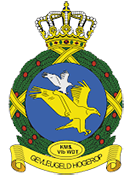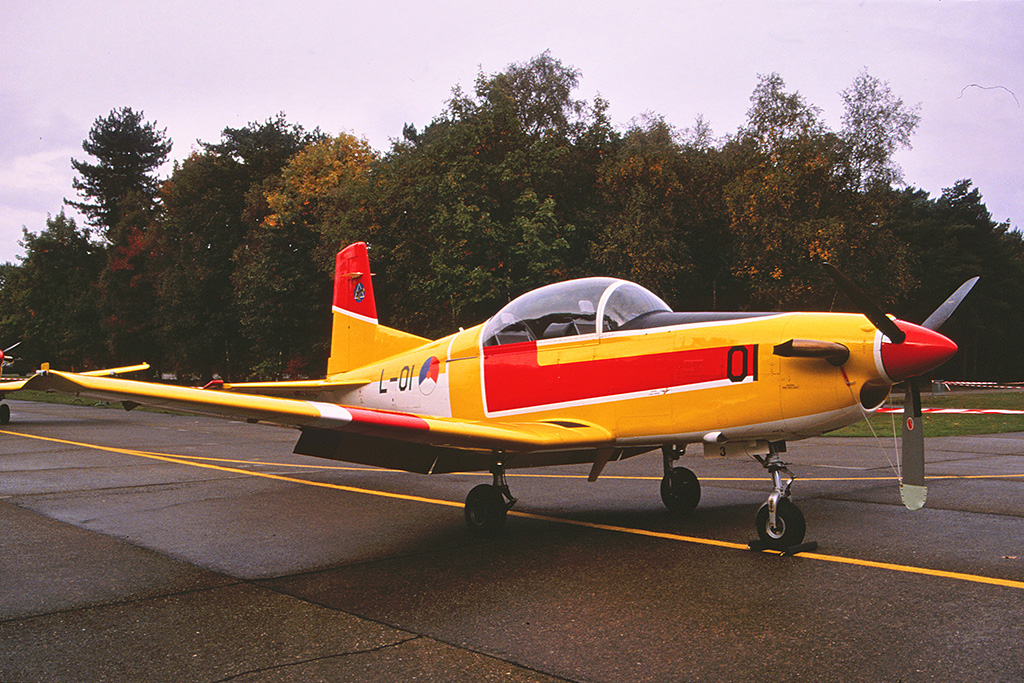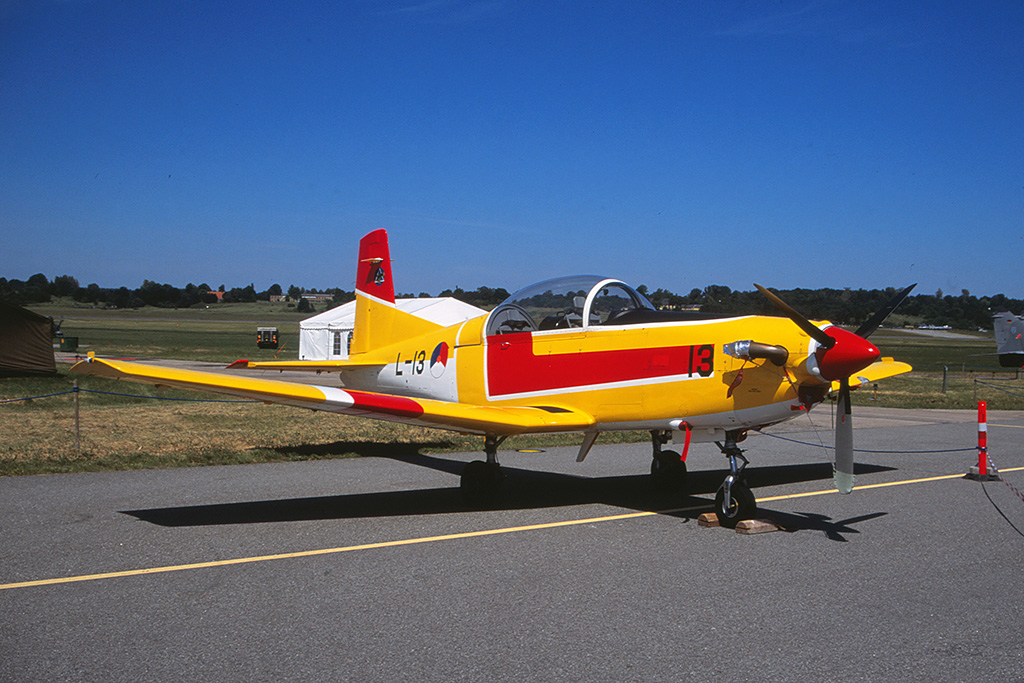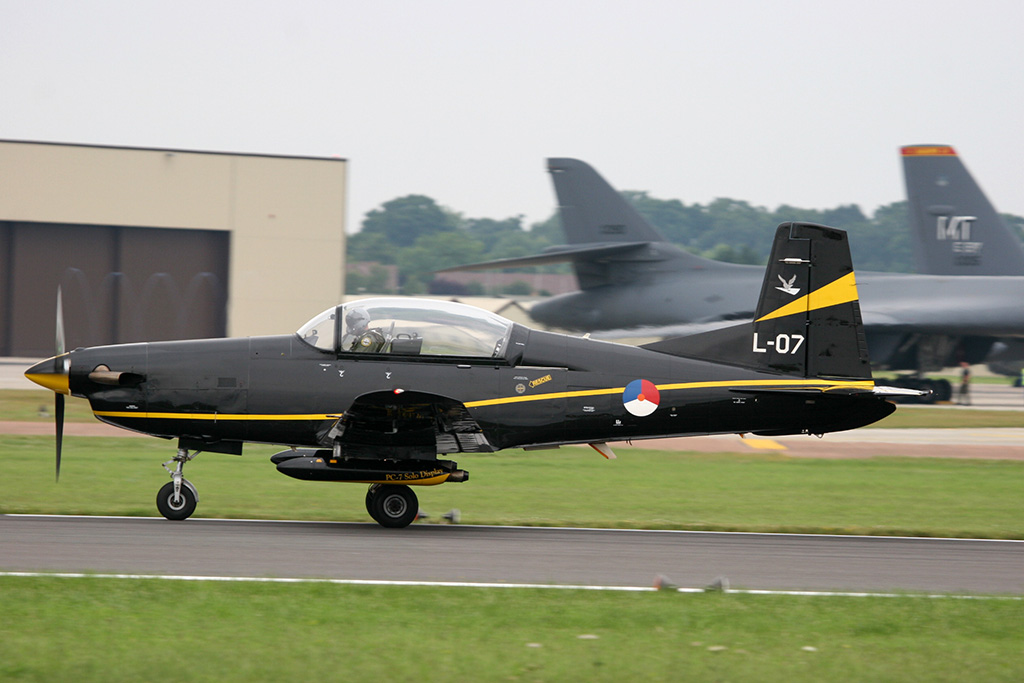|
Service
history of the Pilatus PC-7 Turbo Trainer with the RNLAF
The Pilatus PC-7 is a low-wing tandem-seat turbo training aircraft,
manufactured by Pilatus Aircraft of Switzerland. The aircraft is
capable of all basic training functions including aerobatics,
instrument, tactical and night flying. It has been selected by more
than twenty air forces as their lead in trainer. Since the aircraft's
introduction in 1978, close to five-hundred have been sold, with the
majority still in service.
The first series of the aircraft was delivered to the Myanmar Air Force
in 1979.
.
|
Helicopter Force
|
 |
 |
|
| |
Delivery to the Royal
Netherlands Air Force
A requirement for a lead
in trainer become obvious in 1988 after to many Dutch aspirant-pilots
were unable to finish their flight training in the United States. To
combat this problem it was decided to create a flight were trainees
would make their first hours of basic training before proceeding to the
training in the United States the Elementary Military Flight Training
(EMVO). For the fulfilment of this task ten Pilatus PC-7 were ordered
by the Royal Netherlands Air Force in 1988.
The first Pilatus PC-7 aircraft were delivered in February 1989 and put
into use for basic training of pilots at the Elementary Military Flight
Training, the later 131 squadron. The KLu Pilatus PC-7 have a
lightweight Martin Baker ejection chair and can also be used in bad
weather. The aircraft are stationed at Woensdrecht.
Three more Pilatus PC-7 were delivered in 1997 to obtain more training
capacity. As naval pilots also started to make use of this training.
The Pilatus PC-7 were later given a glossy black trim, for increased
visibility and safety.
.

|
In service
|
 |
 |
|
|
Operational history
After their study at the Royal Military Academy the student pilots are
transferred to the 131 squadron ( the former Elementary Military Flight
Training ) located at Woensdrecht air base and they have to follow the
"Elementary Military Flight Education". When arrived they start the
theoretical ground training for three months. This includes hours on
the flight simulator, After successfully finishing this period they
start flying on board of the Pilatus PC-7 and make around forty flight
hours.
131 Squadron still offers an effective and affordable program in order
to prepare aviators for their successive study with different types of
aircraft. Since the establishment in ’88, the dropout percentage has
been reduced to nearly zero percent.
Since 1995 a standard Pilatus PC-7 is used for display purposes at
several events both in the Netherlands and abroad. The team uses two
smoke pods under the wings. It uses two aircraft, one operational
demonstration aircraft plus one spare.
Not only fighter pilots, but also pilots for the Apache combat
helicopter, Chinook transport helicopter and the NH90 maritime
helicopter, for example, must first pass the elementary training at 131
Squadron before they can continue their training course. The future
F-16 pilots then specialize at Sheppard Air Base and the helicopter
pilots at Fort Rucker in the United States.
The July 2015 contract between the Dutch Defence Materiel Organisation
(DMO) and Pilatus initially covered upgrade of ten Pilatus PC-7
delivered in 1989, but was later extended to include the additional
three aircraft delivered in 1997.
|